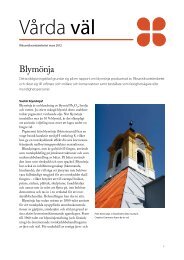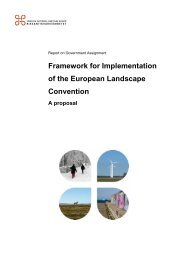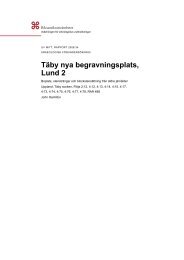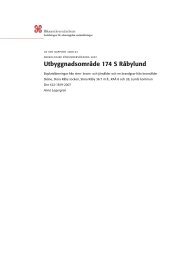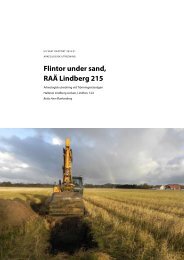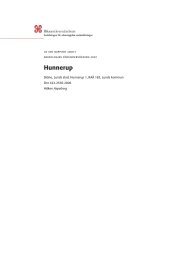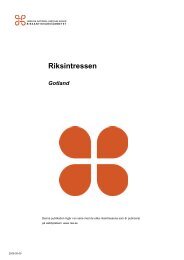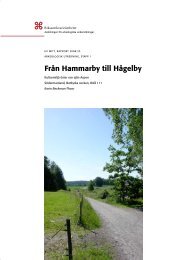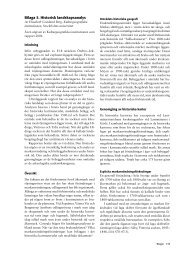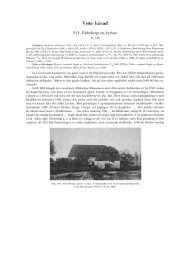Medeltidsmästarnas färgval - Riksantikvarieämbetet
Medeltidsmästarnas färgval - Riksantikvarieämbetet
Medeltidsmästarnas färgval - Riksantikvarieämbetet
- No tags were found...
Create successful ePaper yourself
Turn your PDF publications into a flip-book with our unique Google optimized e-Paper software.
Medeltidsmästarnas färgval 8likely that the mediaeval artists have utilized various organic dyestuffs i.e. when paintingfaces, which colour have now faded away during the centuries. Pigments of later dates haveoften been found in the mural paintings: barium sulphate, zinc white, titanium dioxide,chromium (III) oxide and Scheele’s green, a copper hydrogen arsenite. Such pigmentsreveal “improvements” made by an unauthorized staff in the Church. In addition to theubiquitous lime, other binding media have been found like gypsym, casein (a protein frommilk), drying oils and eruca acid which may originate from rape or turnips.The present study has elucidated which pigments and binding media were used for themediaeval wall paintings in the eleven selected churches. The results may be used in futureconservation work, should it be absolutely necessary to add pigments to a damagedpainting. The presence of poisonous pigments indicate that great caution is necessary forany kind of conservation measures.




